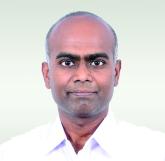News
Potential Genes Identified for Post-Traumatic Headache
- Author:
- Jim Kling
Findings could point the way to screening youth for vulnerability to head trauma.
News

Measuring Cognition in Migraine, One Patient at a Time
- Author:
- Jim Kling
Researchers are developing intensive testing methods to better understand cognitive function in different migraine phases.
News
Prospective MS Trial Proves Ocrelizumab Efficacy in Under-Represented Populations
- Author:
- Jim Kling
A prospective phase 4 clinical trial that recruited solely Black and Hispanic patients could shed light on divergent treatment outcomes.
News
Pediatric Ocrelizumab Dose Established for MS
- Author:
- Jim Kling
Pharmacokinetic and pharmacodynamic data show that adult dose is safe and effective for most children.
News

The Positive Effects of Exercise in MS
- Author:
- Jim Kling
Exercise has a long history in MS, and benefits include improvements in fitness, fatigue, depression, and...
News

Advice, Support for Entrepreneurs at AGA Tech 2024
- Author:
- Jim Kling
Medical entrepreneurship is a hard road, but AGA is ramping up its support for the GI space.
News
MS in Men: Unusual, and Unusually Challenging
- Author:
- Jim Kling
The clinical course is different in men, but it can be challenging to get them to talk about their symptoms.
News
Strategies for MS Fatigue and Sleep Issues
- Author:
- Jim Kling
A multi-day cycle of high and low energy and mood can take hold in MS patients, but there are ways to counter it.
News
In MS With Mild Symptoms, Non-Motor Symptoms Predict Later Mobility Problems
- Author:
- Jim Kling
The findings, seen only in patients with mild symptoms, could have implications for intervention programs.
News
A Simple Stress Intervention for MS
- Author:
- Jim Kling
A stress management plan uses just four sessions and focuses on breathing and coping skills that patients can use on their own.
News
DMTs in Aging MS Patients: When and How to Stop
- Author:
- Jim Kling
Changes to the immune system and the disease course can eliminate efficacy of DMTs, but it’s hard to know when to withdraw them.
News

AI Wins AGA’s Shark Tank Competition
- Author:
- Jim Kling
This technology could dramatically reduce billing errors and recover lost revenue.
News
For Pediatric LGS, Cenobamate Shows Promise
- Author:
- Jim Kling
Small, uncontrolled study shows reductions in hospitalizations and emergency room visits, but limitations make the results difficult to interpret...
News
TMS May Be a Good Alternative to ECT in Depression
- Author:
- Jim Kling
A retrospective analysis shows better outcomes for TMS, but better population comparisons may be needed.
News
Complement Inhibitor Scores Impressive Data in CIDP
- Author:
- Jim Kling
Phase 2 study shows riliprubart performs well in both refractory and treatment-naive patients.
